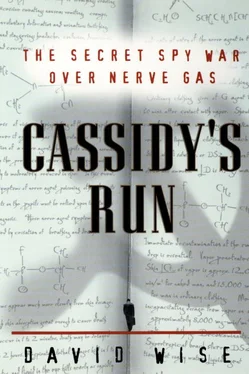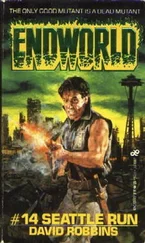Bureaucratic confusion also played a part in the department’s refusal to authorize the arrest of the PALMETTOS. In 1971, a message went out from FBI headquarters to Tampa and Salt Lake City informing both offices that President Nixon’s attorney general, John N. Mitchell, had authorized an entry into the Lopezes’ apartment at the University of Utah to install a microphone. Mitchell, Nixon, and the president’s national security adviser, Henry A. Kissinger, were all briefed regularly on the progress of the PALMETTO case.
As a result of this message, the FBI agents who tapped and bugged the Lopezes in Salt Lake City believed they were acting under the authority of the attorney general. The message, however, was in error. There is no record in the FBI’s files that the request for approval by the attorney general ever left the bureau.
In retrospect, it is clear that several external events, and politics, played at least as great a role in the department’s decision as any points of law. It was the post-Watergate era; six years before, Richard Nixon had tried to use the CIA and the FBI to coverup a burglary at Democratic National Committee headquarters. Then, in 1975, the Senate intelligence committee headed by I daho Democrat Frank Church had revealed abuses by then ation’s intelligence agencies—drug testing on unsuspecting subjects, assassination plots, and mail opening by the CIA, and “black bag” jobs by the FBI. The intelligence agencies were on the defensive.
In April 1978, less than two months before Parker flew to Minneapolis to interview the Lopezes, a federal grand jury had indicted two senior FBI officials, Mark Felt and Edward Miller, for authorizing break-ins to search the homes of relatives and acquaintances of fugitive members of the Weather Underground. [9] Both were convicted and fined for violating the civil rights of the persons whose homes were searched; they were pardoned by President Reagan in April 1981.
“The government has to speak with one voice,” said a Justice Department attorney who worked on the PALMETTO case. “We’re prosecuting somebody at a high level in the FBI for illegal activities, then we’re going to go prosecute a case where the bureau was doing the same thing?” The searches in the Felt-Miller case did not take place as part of a foreign counterintelligence investigation, however. But from a political viewpoint, prosecution of the PALMETTOS might have appeared inconsistent.
Finally, the espionage convictions in May of Ronald L. Humphrey, an employee of the United States Information Agency, and David Truong, an anti–Vietnam War activist, also influenced the department’s response. Attorney General Griffin Bell had authorized the use of a video camera in Humphrey’s office and a bug in Truong’s apartment in Washington, both without warrants, but the attorney general had not approved the camera in Austin. [10] Humphrey and Truong were convicted of spying for Vietnam. They were each sentenced to fifteen years.
Some weeks after the PALMETTOS had fled to Mexico, the Justice Department sent formal notice to the FBI of its decision not to prosecute the Lopezes, citing the wiretaps and entries as the chief reasons. The case had been reviewed by the deputy attorney general, Benjamin R. Civiletti. By that time, however, the horse was long since out of the barn.
There remained severalunexplained aspects to the way the Justice Department handled the case at the end, allowing the two spies to escape. Phil Parker never found any of the department’s explanations either satisfactory or clear. Nor was he told why the criminal complaint was never filed in Tampa. The bottom line was that the government permitted two Soviet spies to escape. For Parker, it was particularly galling.
Even two decades later, the Justice Department’s decision to let the Lopezes go still rankled inside the FBI’s National Security Division, which has responsibility for counterintelligence. John F. Lewis, Jr., who retired in 1998 as assistant director of the FBI in charge of the division, was blunt in his assessment. “Despite the years of intense investigation, a confession from the male PALMETTO, photographs of both subjects receiving classified information, and the loss of two special agents’ lives, the PALMETTOS were allowed to board a plane in Minneapolis bound for Mexico on June 5, 1978.”
After watching thePALMETTOS’ plane disappear into the Minnesota sky, a gloomy Phil Parker drove back to town. There was one more chance to gather additional evidence against Lopez. “We wanted a search warrant for his apartment,” Parker recalled. “The owner of the apartment said the commode was stopped up. We immediately thought Lopez had been getting rid of stuff.”
But Parker and the other FBI agents were spared the indignity of delving into the Soviet agent’s toilet. It was catch-22: “DOJ wouldn’t authorize a search warrant,” Parker said, “because there was no plan for prosecution.”
In the wildernessof mirrors that is counterintelligence, both sides now studied the shadows and reflections and engaged in intricate probability analyses of each other’s stratagems. When an espionage operation goes bad, the intelligence agency responsible for the case conducts a damage assessment that normally explores multiple possibilities: The operation may have been betrayed by a mole or by a double agent; a spy may have practiced sloppy “tradecraft,” such as neglecting to evade surveillance; or the opposition may have penetrated the agency’s codes and communications. [1] When the CIA began losing agents inside the Soviet Union in 1985, for example, the agency first grasped at the possibility that poor tradecraft by the agents or a code break explained the losses. Only much later did the CIA face up to the probability that there was a mole within, a Russian spy who turned out to be Aldrich Ames. Partly because of the institutional reluctance to think the unthinkable, it took nine years to catch him.
Back in FBI headquarters in Washington, Phil Parker decided to try to turn the flight of the Lopezes to the bureau’s advantage. Perhaps their departure could still be used to sow confusion inside the GRU. “In their damage assessment, they would have to figure out where it went wrong,” Parker said.
It had been more than five years since Lopez had appeared at Cassidy’s last drop in Florida; the GRU, Parker reasoned, might trace the trouble back to Cassidy, but it might also logically assume that Lopez had been detected in more recent espionage activity. The FBI had followed Lopez north toward the Canadian border a year earlier because it thought he might be picking up material from real Soviet spies, not just from Joe Cassidy. “We had a strong suspicion Lopez was servicing others,” Parker said.
The intelligence division believed, therefore, that the FBI’s questioning of the Lopezes would not automatically lead the GRU to conclude that Cassidy was a double agent. For that reason, the FBI decided to try to keep Cassidy in play. Jack O’Flaherty recalled, “We had Joe try to continue to contact the Soviets and follow his instructions. And he did get some more messages.”
Parker agreed that Cassidy should continue to try to maintain contact with the Russians. “There were so many potential scenarios as to how we got onto Lopez. We certainly didn’t know what Lopez told them. Did he tell them he’d been approached by the FBI?… They [the GRU] could have thought it was tradecraft lapses,” he said. “They might figure the FBI saw Cassidy meeting with someone from their embassy. The FBI could have followed Cassidy to Tampa and then picked up Lopez’s trail.”
Читать дальше












